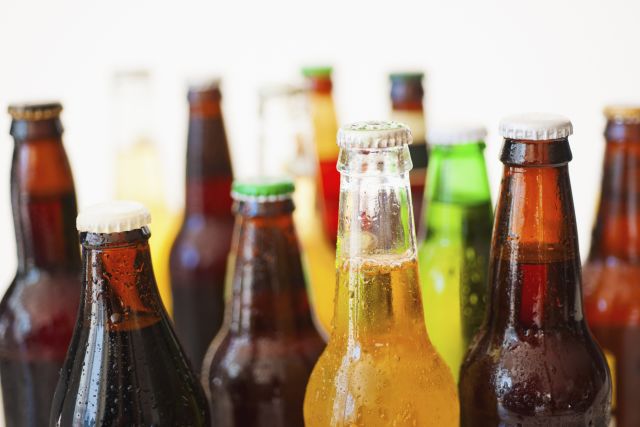Updated on February 16, 2024.
Drinking is associated with a long list of health risks—more than 200, if you’re keeping track. The more you drink, the greater your risk for one or more of these issues, which range from digestive problems and infection to liver or heart disease. Your DNA, medical history, weight, and lifestyle will also make you more or less likely than someone else to develop an alcohol-related disease or condition.
Overall, health experts recommend that limiting alcohol intake to moderate levels (no more than two drinks per day for men or no more than one for women) can help keep these health risks to a minimum. But there is at least one exception: cancer.
When it comes to cancer prevention, avoiding alcohol entirely is best, advises Keith Roach, MD, associate professor in clinical medicine in the division of general medicine at Weill Cornell Medical College and New York Presbyterian Hospital.
Even light drinkers are at slightly increased risk of some cancers, Dr. Roach explains. “The damage from less than one drink a day is small, but it's not zero,” he says. “The risk goes up exponentially once you pass that threshold.”
What research shows
The American Cancer Society estimates that drinking alcohol is responsible for about 6 percent of cancer cases in the United States, and about 4 percent of cancer deaths.
In August 2018, a team of scientists reviewed more than 1,000 studies to estimate the effects of alcohol on the risk for 23 health issues, including seven types of cancer. The comprehensive review, which was published in The Lancet, showed that even one alcoholic drink per day could increase the risk for breast, colorectal, esophageal, pharynx, and oral cancers. The researchers also found that the risk for these diseases increases along with alcohol consumption.
For the purpose of cancer prevention, the World Cancer Research Fund asserts that it’s “best not to drink alcohol.” The United States Department of Health and Human Services also includes “alcoholic beverage consumption” on its list of known human carcinogens.
Red wine is no exception
All types of alcoholic drinks are associated with cancer—no exceptions. Here’s why.
Most evidence supporting the link between cancer and alcohol points to one culprit that’s found in every single alcoholic beverage from fine wine to whiskey: ethanol. So, what matters is how much and how often you drink, regardless of what’s in your glass.
If you think the potential harms of alcohol may be reduced by possibly beneficial chemicals found in red wine, like resveratrol, think again.
Researchers have searched but have yet to find a clear association between moderate red wine consumption and a lower risk for cancer. Drinking for slight or unproven health benefits isn’t a wise decision, considering that the very clear risks associated with drinking escalate with every sip you take, Roach cautions.
“By all means, you can get all the resveratrol you'd like with a glass of grape juice every day,” he adds.
How ethanol is harmful
Understanding what happens to alcohol once it’s in your system could help put these stark findings and statistics into perspective.
Once you start drinking, your body begins metabolizing the alcohol almost immediately. As the ethanol in your drink is broken down, a toxic byproduct called acetaldehyde is formed. Acetaldehyde could not only damage cells but also cause changes in your DNA, which can lead to cancer. DNA controls how your cells grow and function. When this genetic information is damaged, cell growth could spiral out of control and cause tumors to form.
The harmful effects of acetaldehyde are particularly noticeable in the liver, where most alcohol metabolism occurs. But it’s also evident in other parts of the body, including the pancreas, brain, and along the digestive tract.
There are some other ways that drinking alcohol and cancer risk may be connected:
- It could trigger oxidation in the body, which can also damage DNA, proteins, and fats in the body.
- It might prevent the body from absorbing essential nutrients, such as vitamins A, C, D, and E, as well as folate and carotenoids.
- It could increase blood levels of estrogen, a hormone linked to breast cancer risk.
Some cancer-causing contaminants, such as nitrosamines, asbestos fibers, phenols, and hydrocarbons could also result from the fermentation and production processes used to make certain alcoholic drinks.
Meanwhile, all the extra calories in wine, beer, and mixed drinks can lead to weight gain. And obesity is a known risk factor for several forms of cancer.
Risks can add up
Alcohol—even a single drink—can also impair your decision-making, Roach cautions. “The second drink is an awful lot easier than the first, and then you can have much poorer judgment,” he says. “Not only might you have more alcohol, but you might choose less healthy foods. You might be more likely to engage in other risky behaviors.”
You may, for example, be more tempted to smoke—a double whammy when it comes to cancer.
“A family or personal history of cancer is going to put you at risk. If you have other risk factors, particularly smoking, then you're going to have additional risk,” Roach says.
Alcohol is an irritant that can damage cells in the mouth and throat, in particular. “It's direct damage to the lining of the esophagus by the alcohol,” Roach explains.
This could allow harmful chemicals found in tobacco smoke to enter cells more easily. Alcohol could also make it harder for your body to get rid of the toxic chemicals in smoke and for your cells to repair the DNA damage they cause.
The stronger the alcohol, the worse the damage, Roach notes.
In the U.S., a single drink contains roughly 0.6 fluid ounces of pure alcohol, which is the equivalent of 5 ounces of wine, 12 ounces of beer, or 1.5 ounces (a shot) of liquor, such as gin or vodka. But the alcohol content of even similar drinks may vary. For example, beer can range from about 5 to 9 percent alcohol; wines range from about 12 to 17 percent alcohol, and liquors can range from about 40 to 60 percent alcohol.
Your size and sex also matter. Alcohol will likely affect a 110-pound person differently than it will affect someone who weighs 170 pounds, according to Roach. “Women tend to have lower body size and, consequently, a higher level of alcohol in the blood per amount that's been drunk,” he says.
Compared to men, women’s livers have less alcohol dehydrogenase (ADH), an enzyme that breaks down alcohol, Roach adds. Research suggests the ADH in men’s livers is also more active. Men’s stomachs also have more ADH than women’s, enabling them to clear more alcohol before it enters the bloodstream.
Rethinking your drinking
Even if you never took another sip of alcohol, your risk for cancer may not immediately drop to the level it was before you started drinking.
Studies investigating the effects of abstinence on cancer risk—which have primarily focused on cancers of the head, neck, and esophagus—have found that it takes time for your risk to return to pre-drinking levels.
“It happens over time. That's the case with anything that happens in the body,” Roach notes. In many cases, however, the body is able to reverse much of the damage that's done by alcohol, he points out.
So, if you’re a moderate drinker, is it time to go “cold turkey”? Unfortunately, this question doesn’t have a one-size-fits-all answer.
If you don’t already drink, it’s probably best not to start. No level of drinking is completely risk-free. And the more you drink, the higher the risks. You can track your alcohol intake with Sharecare (available for iOS and Android).
But whether or not it’s okay for you to drink moderately on occasion, or never, really depends on you—your age, medical history, genetics, weight, lifestyle, and other individual risk factors for cancer or other health issues.
It’s tough to make the case for even moderate drinking, given the health risks involved. But within these limits, the absolute risk for cancer is small, and some people may simply enjoy life a bit more if they have an occasional glass of wine, Roach says. It’s important to weigh your personal preferences against the risks involved. Talk to your healthcare provider about what’s right for your situation.







